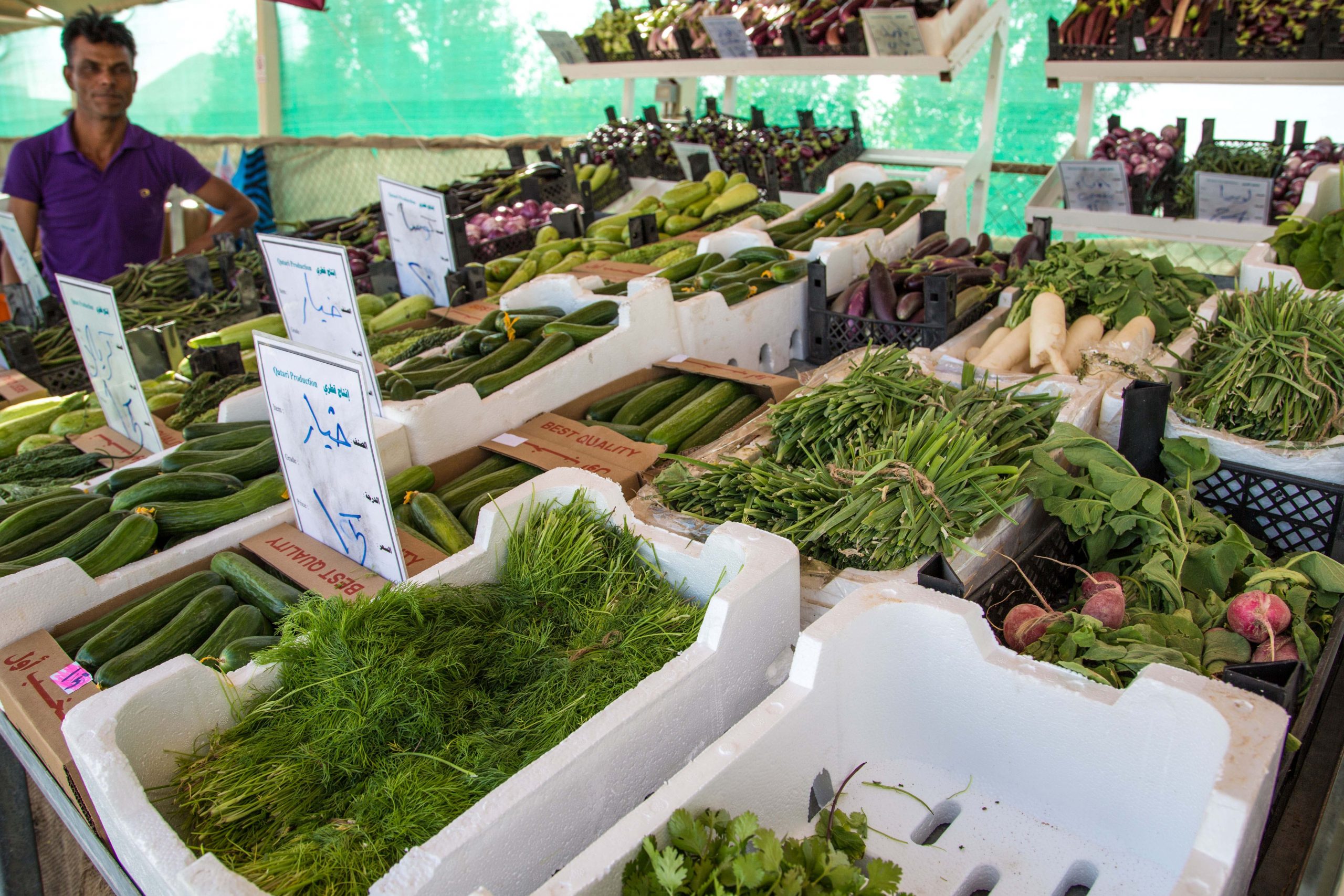
Qatar’s popular farmer’s markets will open for their fourth season this Thursday with a longer selling season and an expanded offering of locally produced fruits, vegetables, poultry, fish and livestock, the Ministry of Environment (MOE) has announced.
The country’s markets are located at the Al Mazrouah Yard near Umm Salal Stadium, in Al Khor at the Al Dhakira yard as well as in Al Wakrah. All three markets in Qatar will operate Thursdays to Saturdays from 7am to 5pm, with livestock vendors operating at the same times throughout the week.

Some 77 produce farms, including one specializing in organic products, are participating. That’s up from 73 last year and is in addition to the eight fish operations, 40 livestock barns, 80 beekeepers and 12 poultry farms, raising chicken, pigeons, ducks, geese and turkeys, participating.
Many residents are attracted by the market’s low prices, which can be 40 to 50 percent lower than retail rates.
Stalls at the farmer’s market are given to the vendors for free, to encourage them to sell their products and help them make a profit, said Abdul Rahman Al Sulaiti, general manager of the farmer’s market at MOE, at a press conference yesterday.
Previous figures released by the MOE suggest that farmer’s markets in Qatar are rapidly growing in popularity.

Fruit sales increased 55 percent year-over-year, while vegetable sales climbed 82 percent. Additionally, fish was up 217 percent while poultry and livestock jumped 317 percent and 265 percent, respectively.
That added up to big business for Qatar’s agriculture sector, with sales more than doubling to QR39 million. That’s up from QR14 million the previous year and QR6 million in 2012-13, according to the MOE.
Food security
In addition to supporting the livelihood of local farmers, the markets are a way of boosting Qatar’s food security.
As an arid desert nation with a rapidly growing population, Qatar is largely reliant on imported food to feed the country.

In an attempt to ease this dependency, the government has encouraged the private sector to construct massive poultry and dairy production facilities.
Such facilities require large amounts of desalinated water, which has led some critics to question the environmental impact of Qatar’s aims to become more self-sufficient in food.
While officials have estimated in recent years that Qatar imports 90 percent of its food, Khalifa Al Ansari, head of farmers’ affairs at the MOE, said increased production means that the figure has decreased to 85 percent.
Expansion
By launching several weeks early and staying open until early June, the MOE is extending the farmer’s markets’ season by a month.

Responding to a question from Doha News, Al Sulaiti said that each season is a bit longer than the previous one, as they gradually increase it to “encourage the farmers to produce more (crops) and start production earlier in the year.”
He explained that as the weather starts to cool down, the agriculture production is usually limited in November, it increases gradually until it reaches its peak in February and then declines again as the temperatures start to hike.
This year also marks an expansion of the Al Wakrah market to include poultry and fish. It opened for the first time last year, but was limited to fruits and vegetables.
This year’s offerings include fresh vegetables such as spinach, cucumbers, iceberg lettuce, potatoes, tomatoes, eggplants, carrots, green peppers and chilis.
The markets will also sell cheese, eggs, other poultry products, fish as well as fresh and canned camel milk.
More information and directions to the markets can be found on its Facebook page.
Thoughts?







